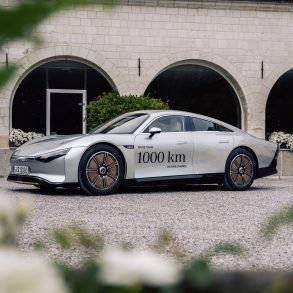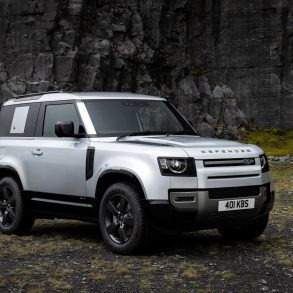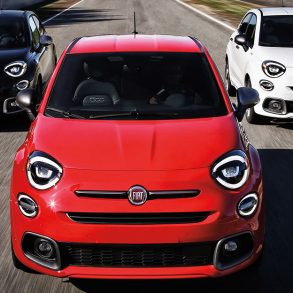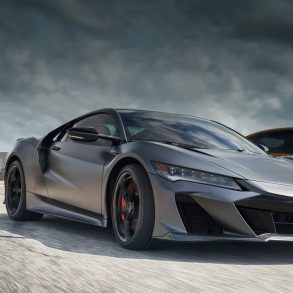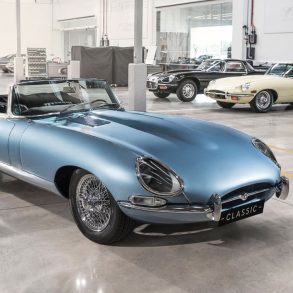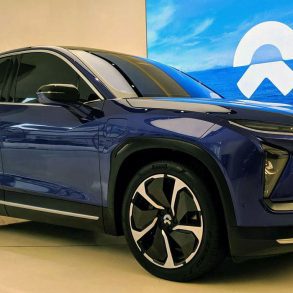Renault Espace
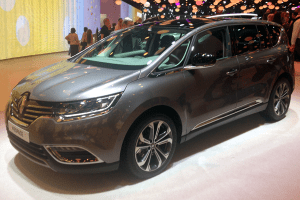
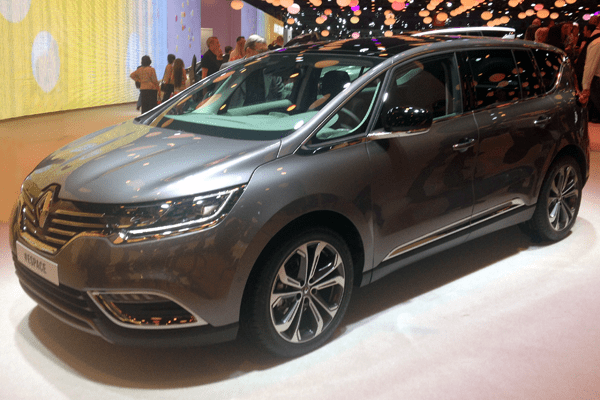 30 Years after the introduction of the groundbreaking first generation Espace and 11 years after the Espace IV, the long awaited fifth generation Renault Espace is shown as a production model in Paris. The exterior design isn’t exactly a surprise, as Renault have made no secret that the Initiale Paris concept car would be a clear indicator for the new Espace. That means it looks much less a large MPV and more a large crossover, although the Espace V will remain front-wheel drive only. After a number of canceled projects, the final production version will be built on Renault-Nissan’s Common Module Family platform that’s also used on the Nissans Qashqai and X-Trail and will be used for Renault’s version of the Qashqai as well as replacements to the Laguna and Megane line-up. That doesn’t sound good for the interior dimensions of the Espace, and from what I could see at the Paris Auto Show, the third row of seats is only suitable for little children, which leads to the question what the Espace has to offer what the Grand Scenic
30 Years after the introduction of the groundbreaking first generation Espace and 11 years after the Espace IV, the long awaited fifth generation Renault Espace is shown as a production model in Paris. The exterior design isn’t exactly a surprise, as Renault have made no secret that the Initiale Paris concept car would be a clear indicator for the new Espace. That means it looks much less a large MPV and more a large crossover, although the Espace V will remain front-wheel drive only. After a number of canceled projects, the final production version will be built on Renault-Nissan’s Common Module Family platform that’s also used on the Nissans Qashqai and X-Trail and will be used for Renault’s version of the Qashqai as well as replacements to the Laguna and Megane line-up. That doesn’t sound good for the interior dimensions of the Espace, and from what I could see at the Paris Auto Show, the third row of seats is only suitable for little children, which leads to the question what the Espace has to offer what the Grand Scenic 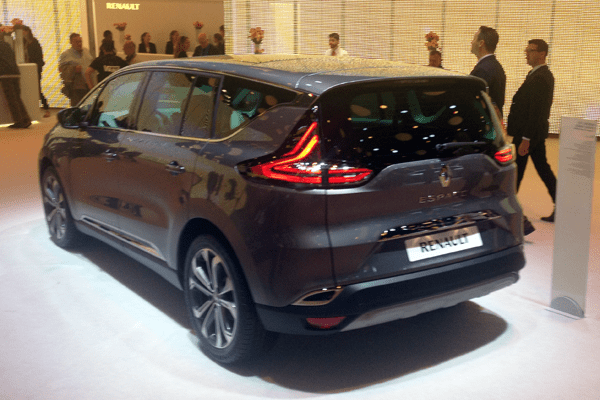 doesn’t. Renault has not yet announced plans for a stretched Grand Espace, but considering this was the most popular version of the previous model and also considering the cramped third seating row, it certainly would make sense to build such a version. European sales of the Espace peaked at just under
doesn’t. Renault has not yet announced plans for a stretched Grand Espace, but considering this was the most popular version of the previous model and also considering the cramped third seating row, it certainly would make sense to build such a version. European sales of the Espace peaked at just under 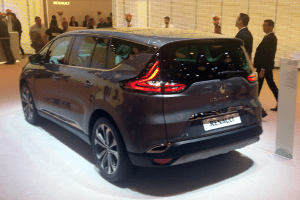 65.000 units in 2004, but have declined to 8.200 sales last year. Renault anticipates 25.000 sales for the new generation, of which Germany and France would each take more than one quarter. But I don’t think those sales figures will be enough to outsell the Ford S-Max and take back the crown of the large MPV segment.
65.000 units in 2004, but have declined to 8.200 sales last year. Renault anticipates 25.000 sales for the new generation, of which Germany and France would each take more than one quarter. But I don’t think those sales figures will be enough to outsell the Ford S-Max and take back the crown of the large MPV segment.
Skoda Fabia
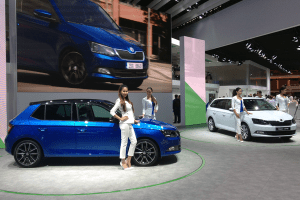
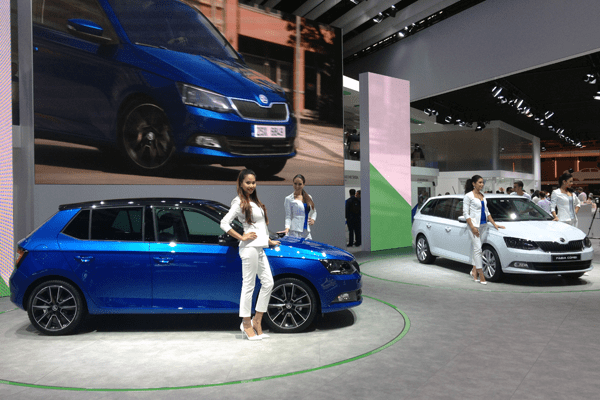 The third generation Skoda Fabia was the star of the Skoda stand, introduced as a five-door hatchback and a station wagon simultaneously, although the station wagon will arrive in showrooms a few months later. Renault and the VW group are the only ones to offer a station wagon version of a subcompact car, with the Renault Clio Estate, Dacia Logan MCV, Seat Ibiza ST as the only competitors to the Skoda Fabia combi. Skoda seems to have adopted the same design strategy that’s proven successful for Volkswagen and Audi, which is to slowly evolve the exterior design of their vehicles instead of trying to come up with a revolutionary new look.
The third generation Skoda Fabia was the star of the Skoda stand, introduced as a five-door hatchback and a station wagon simultaneously, although the station wagon will arrive in showrooms a few months later. Renault and the VW group are the only ones to offer a station wagon version of a subcompact car, with the Renault Clio Estate, Dacia Logan MCV, Seat Ibiza ST as the only competitors to the Skoda Fabia combi. Skoda seems to have adopted the same design strategy that’s proven successful for Volkswagen and Audi, which is to slowly evolve the exterior design of their vehicles instead of trying to come up with a revolutionary new look. 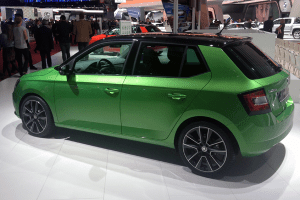 The new Fabia is therefore
The new Fabia is therefore 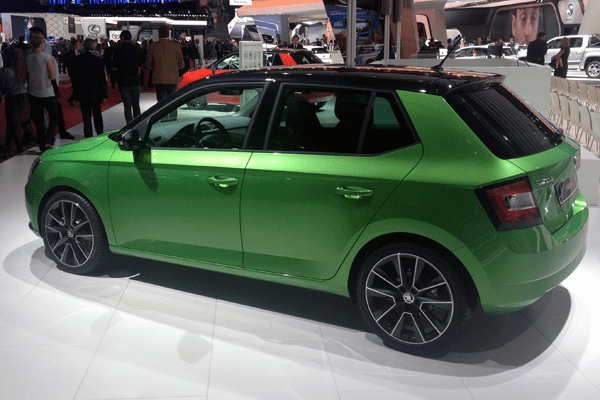 still very recognizable as a Fabia, although critics may say that it looks too much like the old one. Nevertheless, the Fabia should again be able to peak at 200.000 annual sales in Europe, as both previous generations have done by a large margin.
still very recognizable as a Fabia, although critics may say that it looks too much like the old one. Nevertheless, the Fabia should again be able to peak at 200.000 annual sales in Europe, as both previous generations have done by a large margin.
Smart Forfour
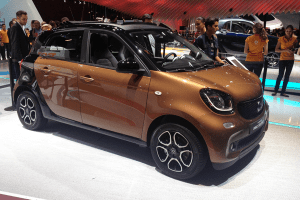
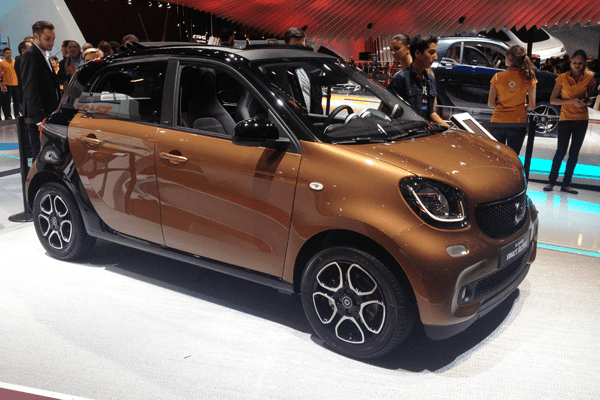 Smart has revealed the production version of the Forfour, which is now styled as a four-door, four-seat Fortwo, as a result of which its dimensions are a bit awkward in my opinion. The Forfour looks as if it should have been wider, as it now looks a bit tall and stretched, even more so than the new generation Renault Twingo, which has been co-developed with the Smarts. That means all three vehicles feature a rear-engined, rear-wheel drive layout as the only three in the segment. That does miracles for the turning circle, which is important for a city car, but is a risk when it comes to driving pleasure. It could be disastrous, like the first generations Fortwo, but if done right it could be a strong selling point as well. Smart hasn’t given official sales projections, but it’s no secret that 100.000 sales have
Smart has revealed the production version of the Forfour, which is now styled as a four-door, four-seat Fortwo, as a result of which its dimensions are a bit awkward in my opinion. The Forfour looks as if it should have been wider, as it now looks a bit tall and stretched, even more so than the new generation Renault Twingo, which has been co-developed with the Smarts. That means all three vehicles feature a rear-engined, rear-wheel drive layout as the only three in the segment. That does miracles for the turning circle, which is important for a city car, but is a risk when it comes to driving pleasure. It could be disastrous, like the first generations Fortwo, but if done right it could be a strong selling point as well. Smart hasn’t given official sales projections, but it’s no secret that 100.000 sales have 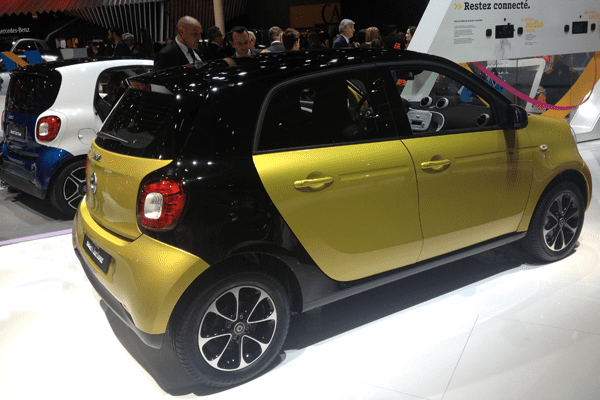 always been the target for the Fortwo,
always been the target for the Fortwo, 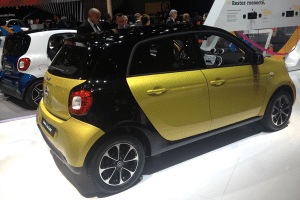 so that goal won’t change for the new generation. The Forfour will prove a much harder sell, just like the first generation, that can’t be considered a success in any way you look at it. I expect the Forfour to peak at 20.000 units, which would still be enough for both cars to double this year’s sales of Smart.
so that goal won’t change for the new generation. The Forfour will prove a much harder sell, just like the first generation, that can’t be considered a success in any way you look at it. I expect the Forfour to peak at 20.000 units, which would still be enough for both cars to double this year’s sales of Smart.
Suzuki Vitara
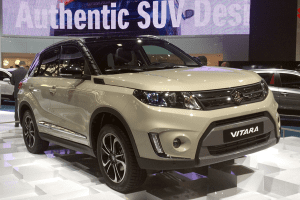 Suzuki unveils the new generation Vitara in Paris, which despite its familiar name is an entirely different vehicle than
Suzuki unveils the new generation Vitara in Paris, which despite its familiar name is an entirely different vehicle than 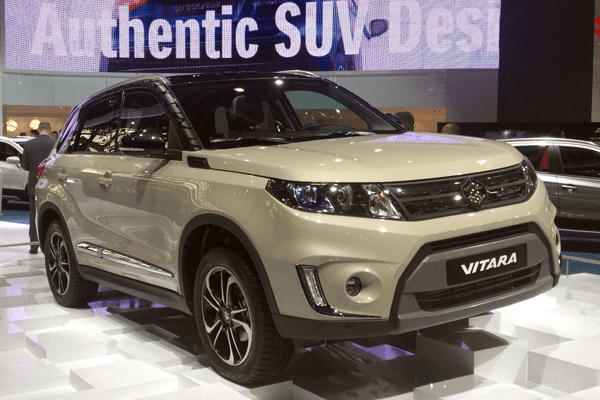 the outgoing (Grand) Vitara. It will no longer be a midsized SUV, but will be placed below the already successful S-Cross to compete in the fast-growing small crossover segment against the likes of the Renault Captur and Dacia Duster. The Vitara will feature the same 1,6 liter gasoline and diesel engines as the S-Cross and will be available with an optional 4WD system. The color of the roof is customizable like that of the Captur and its front end shows some styling cues from Land Rover,
the outgoing (Grand) Vitara. It will no longer be a midsized SUV, but will be placed below the already successful S-Cross to compete in the fast-growing small crossover segment against the likes of the Renault Captur and Dacia Duster. The Vitara will feature the same 1,6 liter gasoline and diesel engines as the S-Cross and will be available with an optional 4WD system. The color of the roof is customizable like that of the Captur and its front end shows some styling cues from Land Rover, 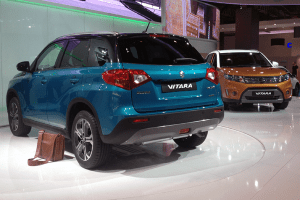 most notably the “floating hood” which used to be a typical Range Rover trademark. Production will take place in Suzuki’s factory in Hungary and it will be available from April or May 2015. I estimate sales volume to peak at 40.000 units per year in Europe, making it the brand’s second best selling model behind the Swift subcompact, but far behind the top-5 of the segment.
most notably the “floating hood” which used to be a typical Range Rover trademark. Production will take place in Suzuki’s factory in Hungary and it will be available from April or May 2015. I estimate sales volume to peak at 40.000 units per year in Europe, making it the brand’s second best selling model behind the Swift subcompact, but far behind the top-5 of the segment.
Volkswagen Passat
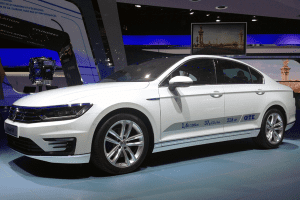
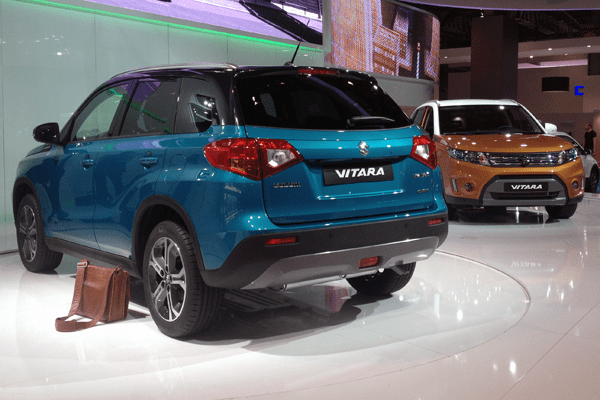 The new generation VW Passat has been styled very conservatively, especially from the rear you need to look at least twice to see if it’s the new one or the outgoing model. But that won’t keep the Passat from staying the benchmark in the midsize segment and the only model that can come close to the sales figures of the Big Three premium midsized models, as the biggest changes are under the skin.
The new generation VW Passat has been styled very conservatively, especially from the rear you need to look at least twice to see if it’s the new one or the outgoing model. But that won’t keep the Passat from staying the benchmark in the midsize segment and the only model that can come close to the sales figures of the Big Three premium midsized models, as the biggest changes are under the skin.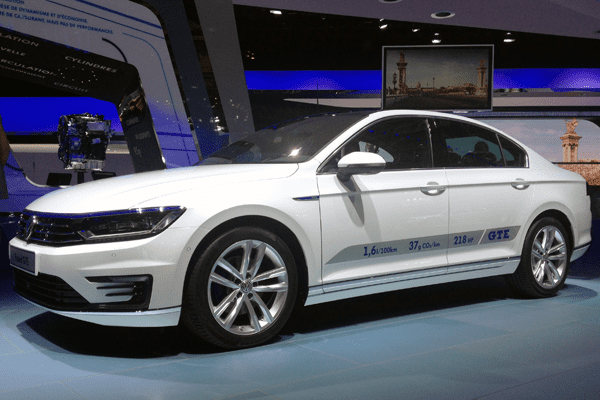 The eighth generation Passat uses Volkswagen Group’s new MQB platform and there will be a plug-in hybrid version, called the Passat GTE. VW is betting big on diesels in this segment, in some markets, like the UK,
The eighth generation Passat uses Volkswagen Group’s new MQB platform and there will be a plug-in hybrid version, called the Passat GTE. VW is betting big on diesels in this segment, in some markets, like the UK, 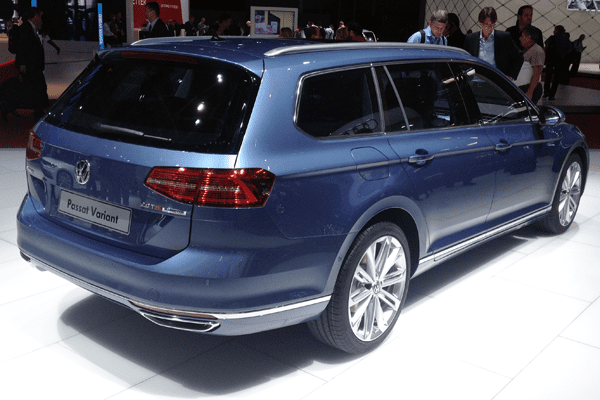 the Passat will be offered exclusively with diesel engines.
the Passat will be offered exclusively with diesel engines. 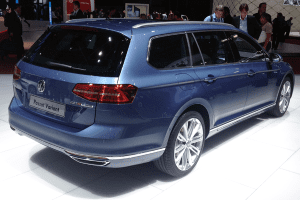 Almost half of the model’s volume will be produced and sold in China, where it’s called the Magotan. Germany will be the next important market, with more than one third of the European volume. The USA version of the Passat remains a stand-alone model and won’t receive these updates.
Almost half of the model’s volume will be produced and sold in China, where it’s called the Magotan. Germany will be the next important market, with more than one third of the European volume. The USA version of the Passat remains a stand-alone model and won’t receive these updates.
Volvo XC90
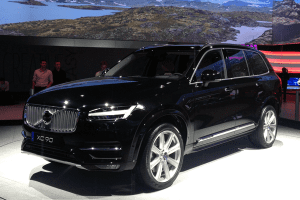 After a 12-year life cycle and more than 225.000 sales in
After a 12-year life cycle and more than 225.000 sales in 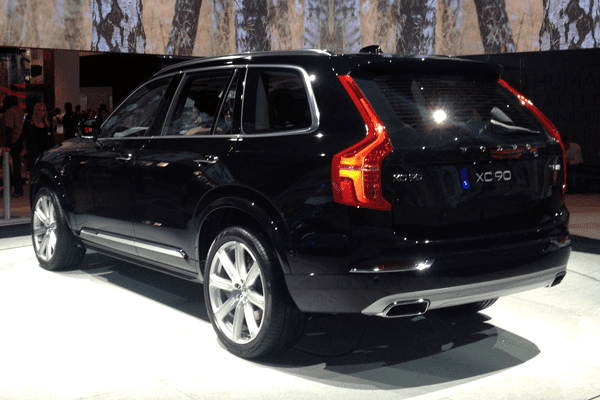 Europe, Volvo’s first and largest SUV will finally be renewed. This is the first Volvo entirely developed under Geely ownership, and China is expected to be the biggest market for the model, taking more than one third of global sales, compared to one quarter in Europe and less than one fifth in the USA. The first generation XC90 will be produced in China as well for another few years, just for the local market. Besides the new design, the XC90 is also technically all-new, underpinned by Volvo’s new Scalable Product Architecture which will be used for all future Volvos except for the compact V40 and possible
Europe, Volvo’s first and largest SUV will finally be renewed. This is the first Volvo entirely developed under Geely ownership, and China is expected to be the biggest market for the model, taking more than one third of global sales, compared to one quarter in Europe and less than one fifth in the USA. The first generation XC90 will be produced in China as well for another few years, just for the local market. Besides the new design, the XC90 is also technically all-new, underpinned by Volvo’s new Scalable Product Architecture which will be used for all future Volvos except for the compact V40 and possible 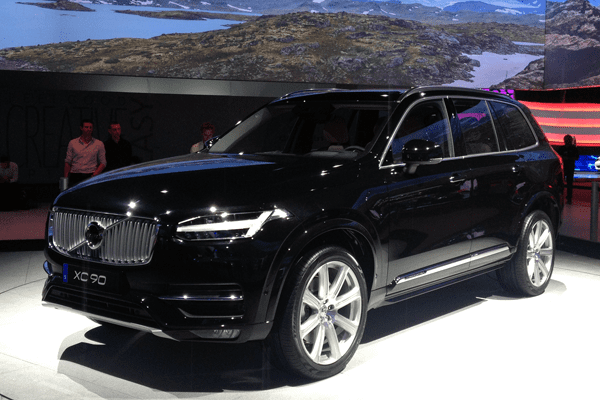 derivatives. It will be hard for the XC90 to reach
derivatives. It will be hard for the XC90 to reach 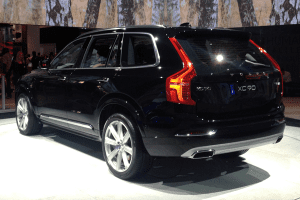 the same levels of sales as the first generation, because of increased competition in the large premium SUV segment. With 17.500 sales, I estimate the new generation to remain limited to just half of the previous one’s peak of 35.000 annual sales, also because the segment as a whole has halved in size since 2007.
the same levels of sales as the first generation, because of increased competition in the large premium SUV segment. With 17.500 sales, I estimate the new generation to remain limited to just half of the previous one’s peak of 35.000 annual sales, also because the segment as a whole has halved in size since 2007.
Also read:
Paris Auto Show 2014: new models, part 1: Fiat 500X to Hyundai i20
Paris Auto Show 2014: new models, part 2: Jaguar XE to Mazda MX-5

